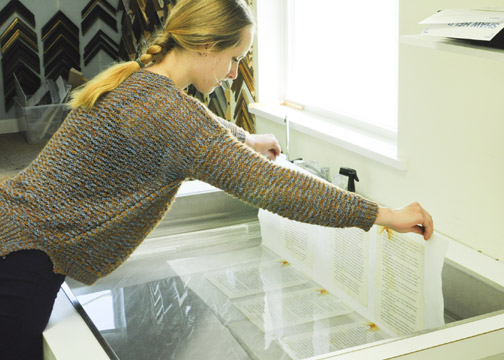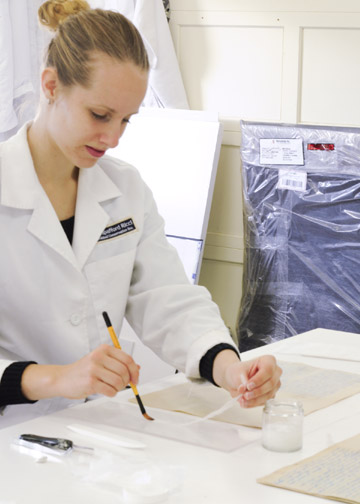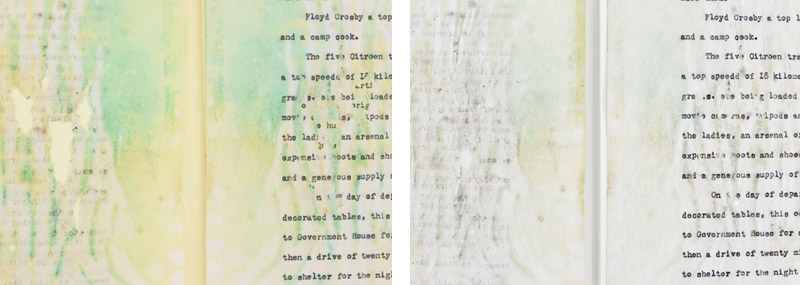1934 Sub-Arctic Expedition Journal is Conserved, Digitized and Prepared for Archival Storage
 The 1934 historic memoirs of a sub-Arctic expedition have been conserved by Emilie van der Hoorn, Conservator of Paper. A hand-written diary and typewritten copies are held by the University of Northern British Columbia. The NBCA’s conservation treatment project was partially funded by an anonymous private foundation, and FSR is very pleased to have been chosen for this project.
The 1934 historic memoirs of a sub-Arctic expedition have been conserved by Emilie van der Hoorn, Conservator of Paper. A hand-written diary and typewritten copies are held by the University of Northern British Columbia. The NBCA’s conservation treatment project was partially funded by an anonymous private foundation, and FSR is very pleased to have been chosen for this project.
In 1934, French-born American millionaire Charles Bedaux, embarked upon an expedition to cross 2,300 kilometers of unmapped northern British Columbia (BC) territory east of the Rocky Mountains, using the then newly designed Citroën halftrack vehicles. He initiated one of the most extravagantly equipped overland parties ever seen, which included a fleet of automobiles, 130 packhorses, 53 Canadian cowboys, 400 pounds of books, more than 20 tons of supplies, 2 professional surveyors, a geologist, and a film crew led by Oscar-winning Hollywood cinematographer, Floyd Crosby. A hand-written diary and typed notes survived from the expedition, created by A.H. (Al) Phipps, one of the surveying crew members. The documents record his observations about the terrain, surveying activities, and ultimately the causes for the expedition’s failure – all rare evidence of an internationally known event.

The rust stains were treated with a chelating agent to stop the degradation and reduce their appearance. The sheets were then alkalized to neutralize acids and deposit an alkaline buffer in the paper to promote future preservation.

|


After treatment (right): The pages are much cleaner and are chemically stable. Suppleness has been returned to the sheets allowing them to be safely handled without cracking or tearing. The bled ink was reduced that allows the written inks increased clarity and readability. To retain the original character of a book, the journal was rebound but with the addition of interleaving pages to slow future deterioration.


